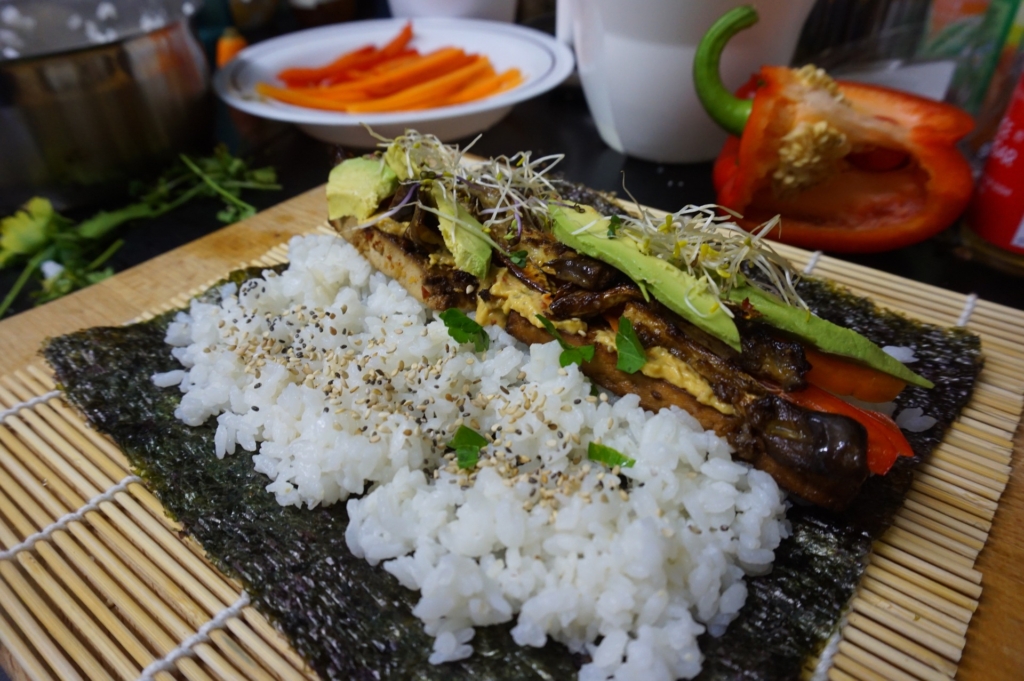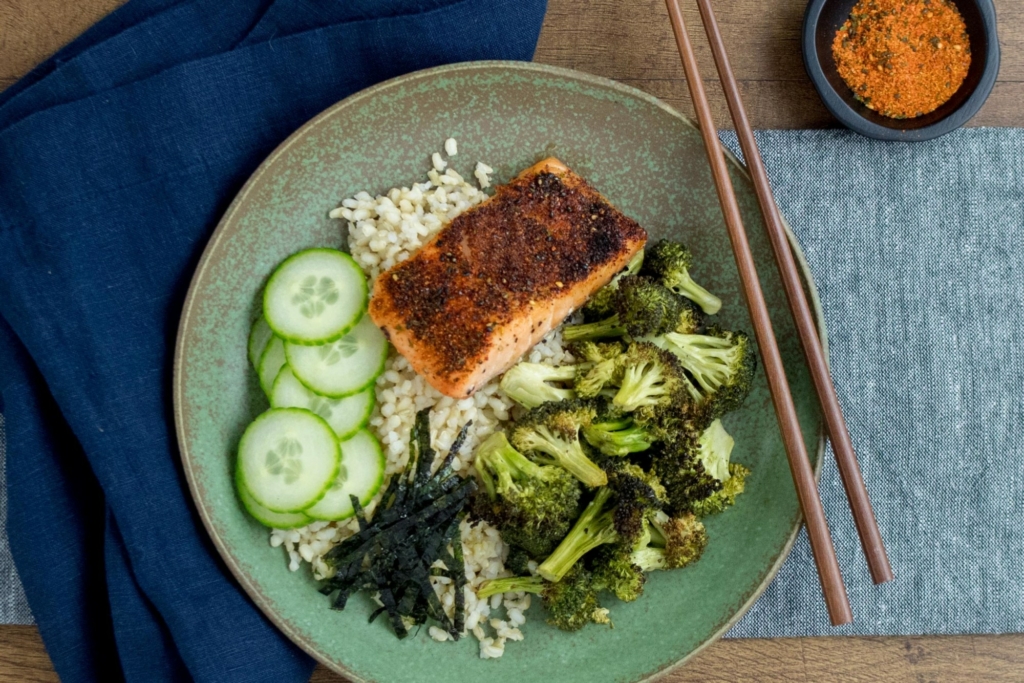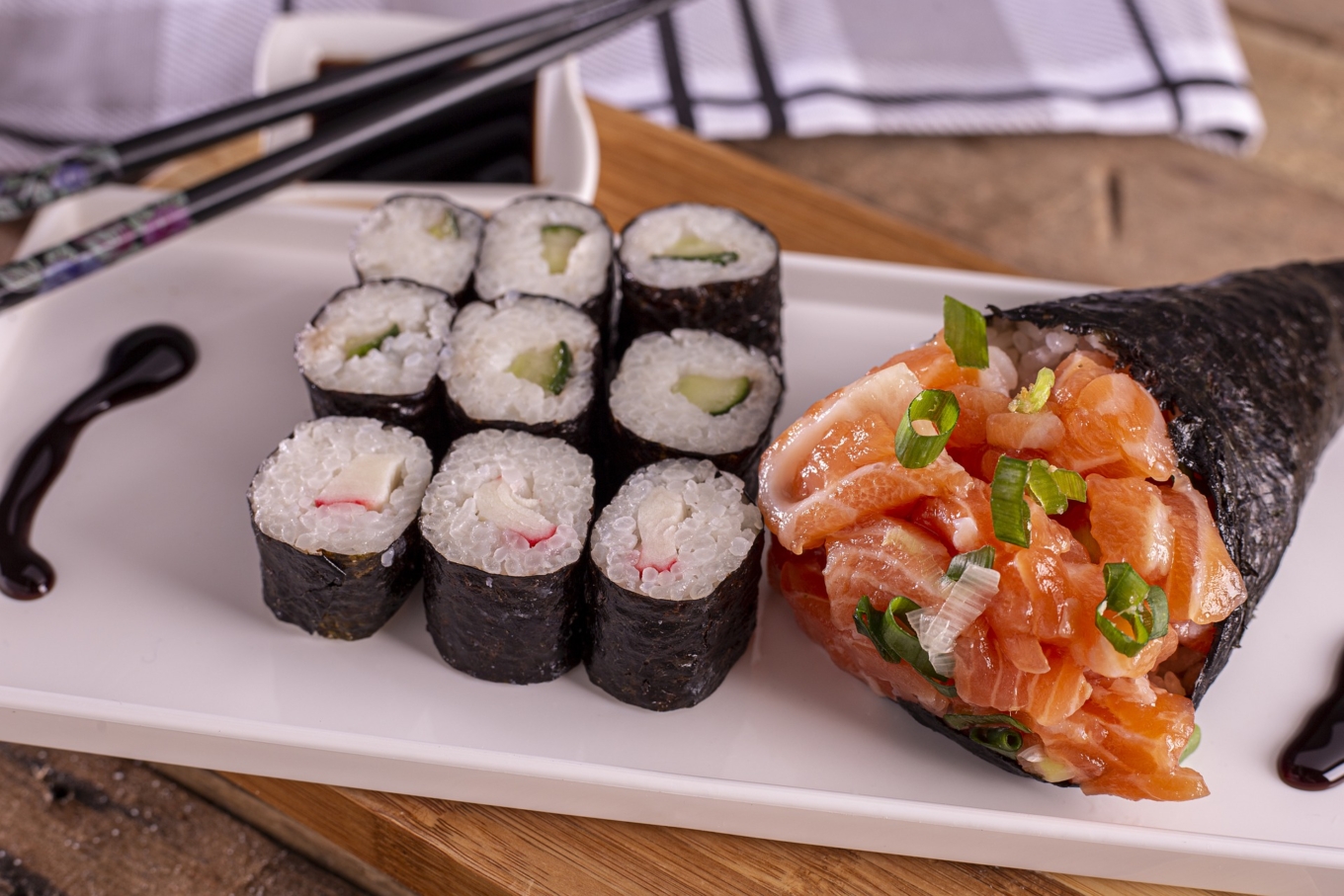If you’re a fan of Japanese cuisine, odds are you’ve already had nori. Whether wrapped around a rice ball or rolled into a sushi roll, these paper-thin sheets of edible seaweed are verifiable umami bombs and an absolute essential in Japanese cuisine.
What Does Nori Taste Like?
Nori is packed with umami and has the briny, fishy flavor of the sea. It’s deeply savory with a slight sweetness and, depending on the drying process, can also have notes of smokiness.
How is Nori Made?
Nori is made with a specific genus of red algae seaweed known as pyropia. The algae are grown on nets suspended at the surface of the sea and take about 45 days to grow from the “seed”. They’re then harvested from the same net around every 10 days. The harvested seaweed is rinsed then shredded and combined with a small amount of water to form a malleable paste. This mixture is fed into machines to create wafer-thin sheets of nori, then dried in large ovens before being checked for quality and packaged.
What to do with Nori

Nori is a must-have in various Japanese dishes, whether as a structural component like in maki (sushi rolls) and onigiri (rice balls) or as a flavorful garnish such as over takoyaki (octopus balls) and okonomiyaki (savory pancake). They’re even ubiquitous in Japanese fusion dishes such as Hawaiian spam musubi. Use a classic nori sheet to make easy at-home California rolls or cut them into strips for garnishing your togarashi salmon rice bowl. Nori adds a layer of salty, umami-rich ocean flavor that complements other seafood elements in the dish and heightens the flavor of the vegetables.
These flavorful seaweed sheets are also essential in Korean cuisine, particularly for making gimbap, bite-sized filled rice rolls similar to Japanese maki. Roasted seasoned nori, known as gim-gui are also often eaten with meals, especially to add more flavor to white rice. The next time you make our white fish rice bowl or order our Korean fried rice bowl, try eating each bite with a piece of roasted nori. You can thank us later.

Feature Image: Carlos Carlos Alberto from Pixabay



